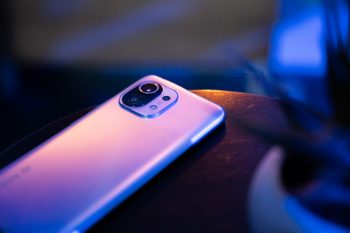
The global version of the Xiaomi Mi 11 has landed
Late in 2020, we saw Xiaomi announce the all-new Mi 11, which was the first device to be powered by Qualcomm’s latest Snapdragon 888 chipset. It’s always neat to see what company is going to be the “first”, but since then, Samsung has kind of rained on the parade with its launch of the Galaxy S21.
8 reasons you should buy the Xiaomi Mi 11
Plus, the Mi 11 was only available in select markets back in December, but that’s all changing soon. Xiaomi is back again with its announcement of the global variant of the Mi 11.
Xiaomi Mi 11 Spec breakdown
The device features a gorgeous 6.81-inch AMOLED display with a WQHD+ resolution, along with its 120Hz refresh rate. For a flagship-level device, we expected to see the fastest refresh rates, so it’s great to see Xiaomi deliver on this front.
- Display: 6.81-inch, AMOLED DotDisplay, WQHD+ Resolution
- Refresh Rate: 120Hz
- Processor: Qualcomm Snapdragon 888
- Memory: 8GB of RAM, 128GB/256GB storage
- Rear cameras: 108MP (main), 13MP (ultra-wide angle, 123-degrees), 5MP (macro)
- Front-facing camera: 20MP
- Battery: 4,600mAh, 55W wired fast charging, 50W wireless fast charging, 10W reverse wireless charging
- Colors: Midnight Gray / Horizon Blue
- Software: MIUI 12 based on Android 10
- Price: €749
As we mentioned, the Mi 11 is powered by the Snapdragon 888 processor, which is built on Qualcomm’s new 5nm process. This aims to provide all of the horsepower improvements you would expect from Qualcomm, while also featuring an onboard 5G antenna and being more power efficient than the older 7nm processors.
Xiaomi paired the SD888 with 8GB of RAM and either 128GB or 256GB of onboard storage, which should be plenty for some, but we would have liked to see a microSD card slot available. While Samsung finally ditched expandable storage with the S21, there was some hope that other devices wouldn’t fall in line with this trend, but it seems those hopes are all but gone for the time being.
Cameras
Whenever a new flagship smartphone is announced or released, one of the big questions is how will the cameras stack up. Well, folks will be quite ecstatic with the triple camera system found on the back of the Mi 11 with its 108MP primary sensor.
This is flanked by a 13MP ultra-wide camera, along with a 5MP macro lens for those who want to get up close without sacrificing too much in the image quality department. And as you would expect, Xiaomi tossed in a few extra software features to make the most out of this camera system.
Notably, there are multiple night modes at your disposal on the Mi 11. Normally, smartphones are only able to use Night Mode with the primary camera, but the Mi 11 provides it on the primary 108MP camera, secondary 13MP ultra wide lens, and the 20MP selfie camera. This ensures that you’ll be able to snap some pretty great pics, regardless of how much light you have.
Mobile videographers can also rejoice with the ability to record video in HDR10+, along with being able to record in night mode with built-in noise reduction. You can even use the new Pro Time-lapse mode which allows you to control a number of variables including ISO, shutter speed, and more.
Battery
Another key concern for many has everything to do with battery life. We’ve seen company’s like Apple and Samsung “cut corners” with the decision to not include wall chargers in the box. The move was less egregious for Apple, since the company skimped on the included chargers anyways. However, Samsung always included a fast wall charger, so the lack of one has left people to find compatible chargers elsewhere.
Before diving into whether Xiaomi included a charger in the box or not, let’s take a look at what the Mi 11 is capable of. Xiaomi packed a 4,600mAh battery into the Mi 11, which is pretty standard for most phones nowadays. But the real fun comes in when you look at the charging speeds.
Xiaomi states that the Mi 11 can take advantage of 55W wired fast charging, along with 50W wireless fast charging. There’s even reverse wireless charging built-in providing speeds up to 10W for accessories like headphones or smartwatches.
But the best part about this is that while Xiaomi gave early Mi 11 adopters the option for an included charger, it seems that the global variant will include one in the box. This wall charger will provide the fastest 55W charging speeds for your Mi 11. Although, you’ll need to do some hunting for a wireless charger that can actually provide the 50W of speed needed for fast wireless charging.
Price and availability
So when are you going to be able to get your hands on the all-new Xiaomi Mi 11, and how much is it going to cost? Well, the global version of the Mi 11 is priced at just €749 for the base model with 8GB of RAM and 128GB of storage. It will be coming to various markets across Europe in the coming weeks.
To put that in perspective, the base model Galaxy S21 is priced at €879, and the Mi 11 is arguably a better value. In fact, a better comparison would be to the Galaxy S21+, which is priced at €1079. Xiaomi is really undercutting Samsung here, with similar spec-sheets, and similar camera systems. What it will come down to for you is whether you value Samsung’s color schemes, Xiaomi’s build quality.